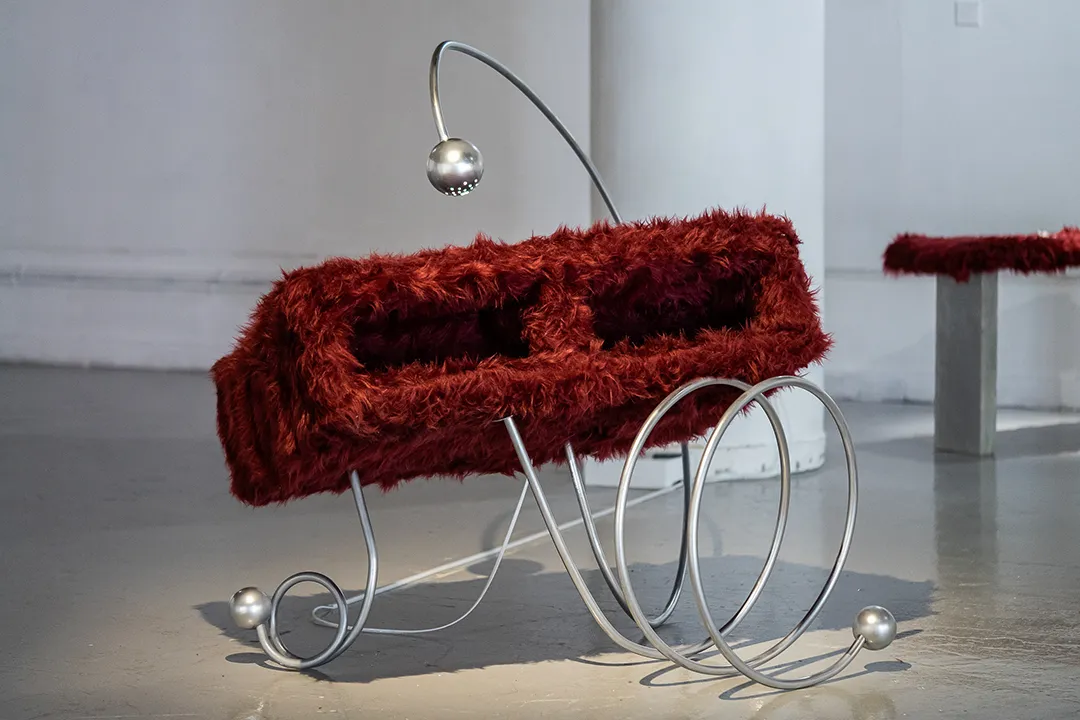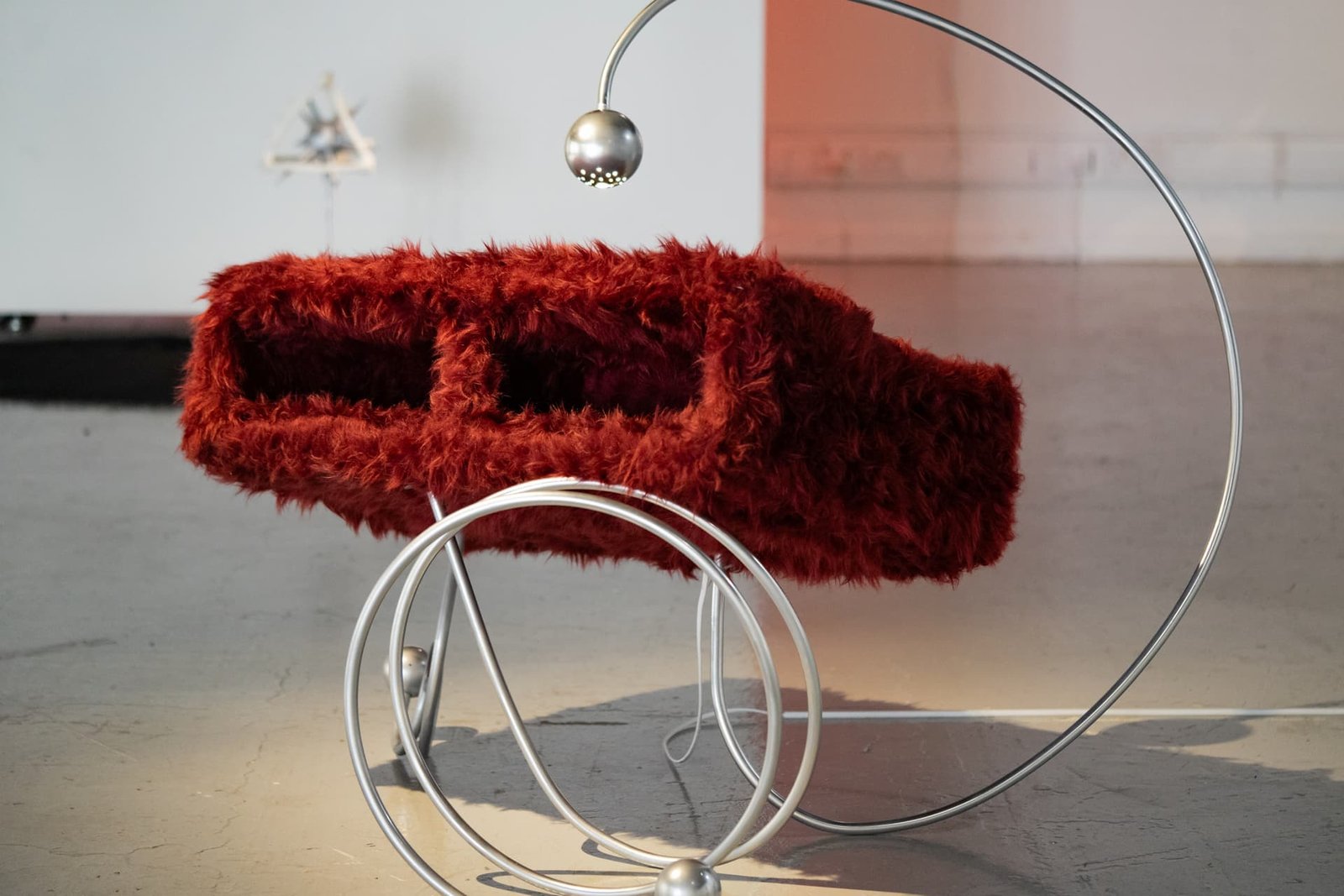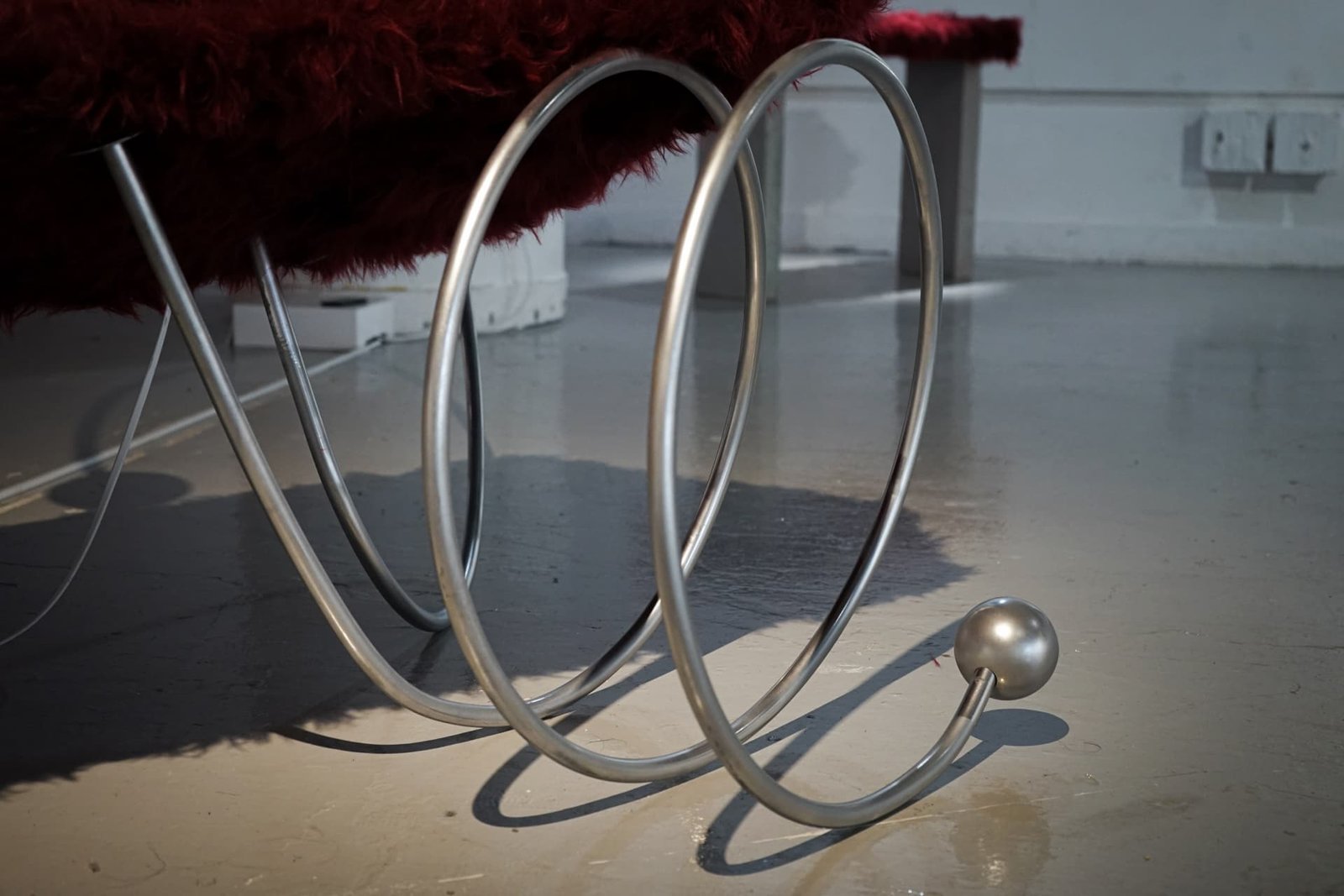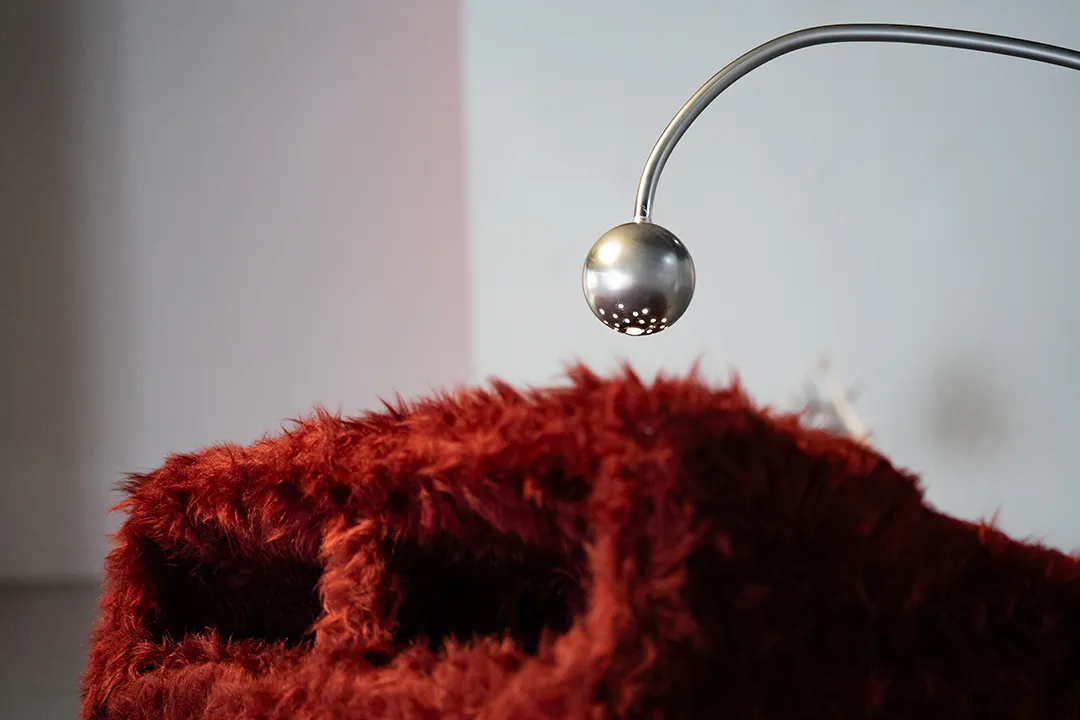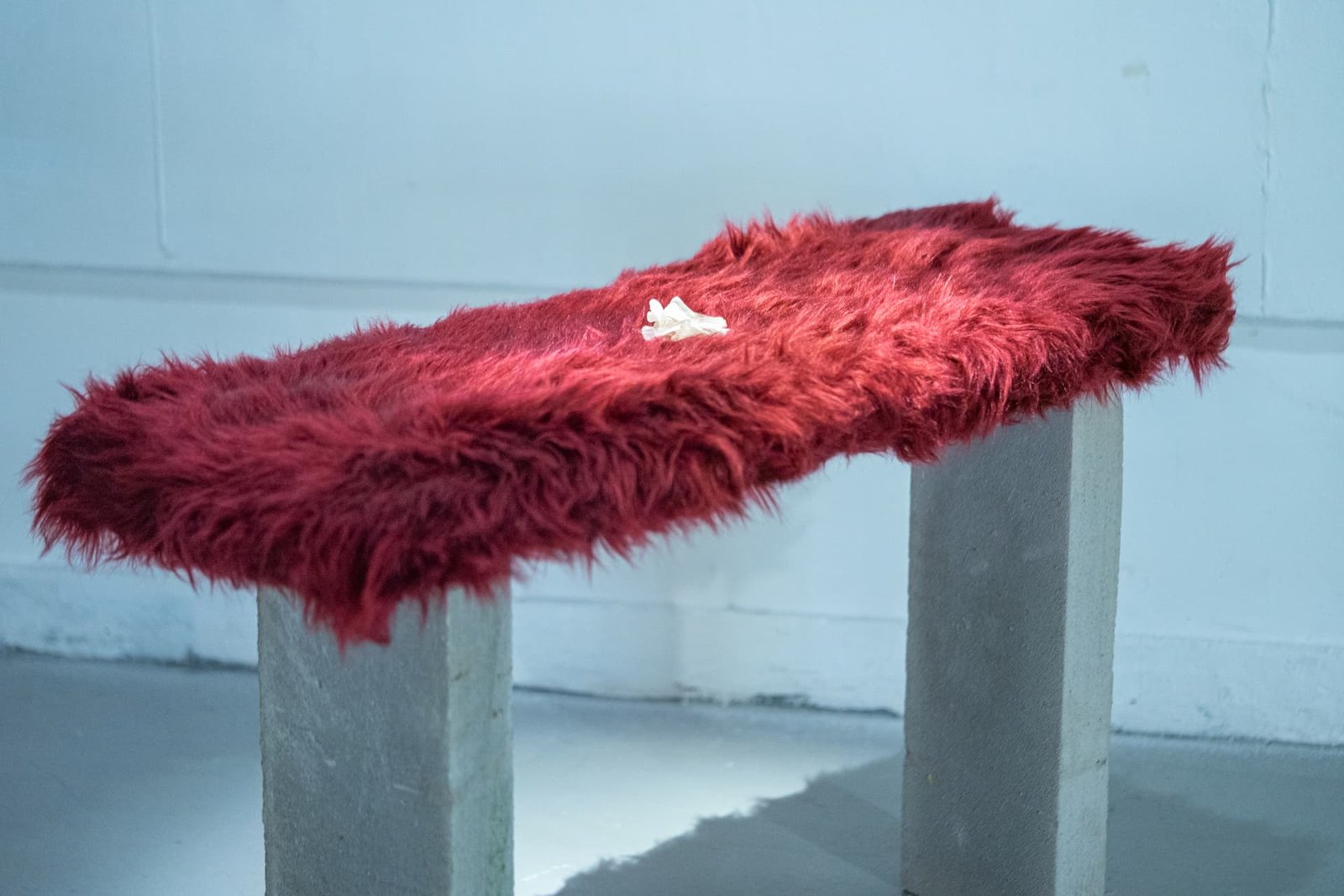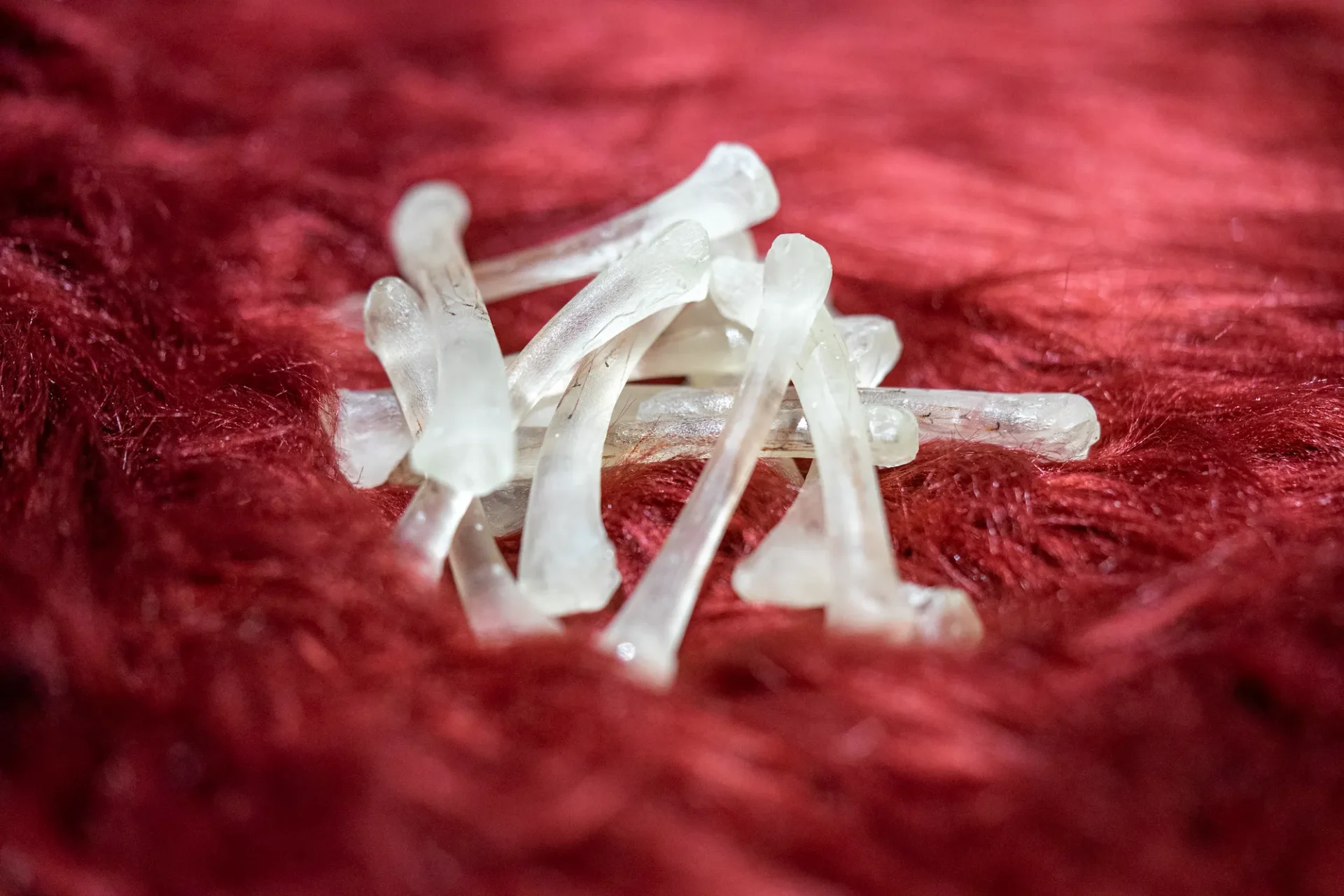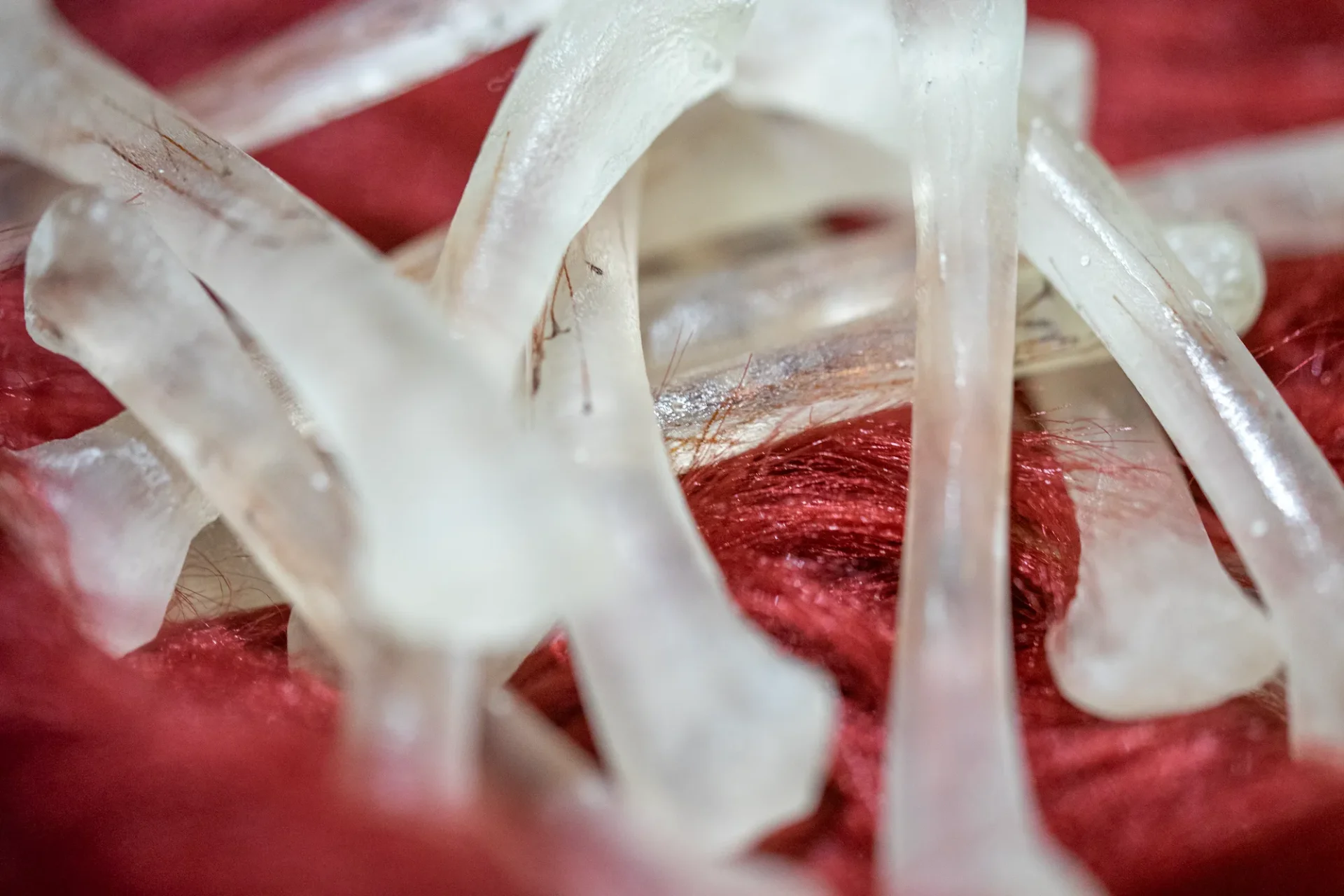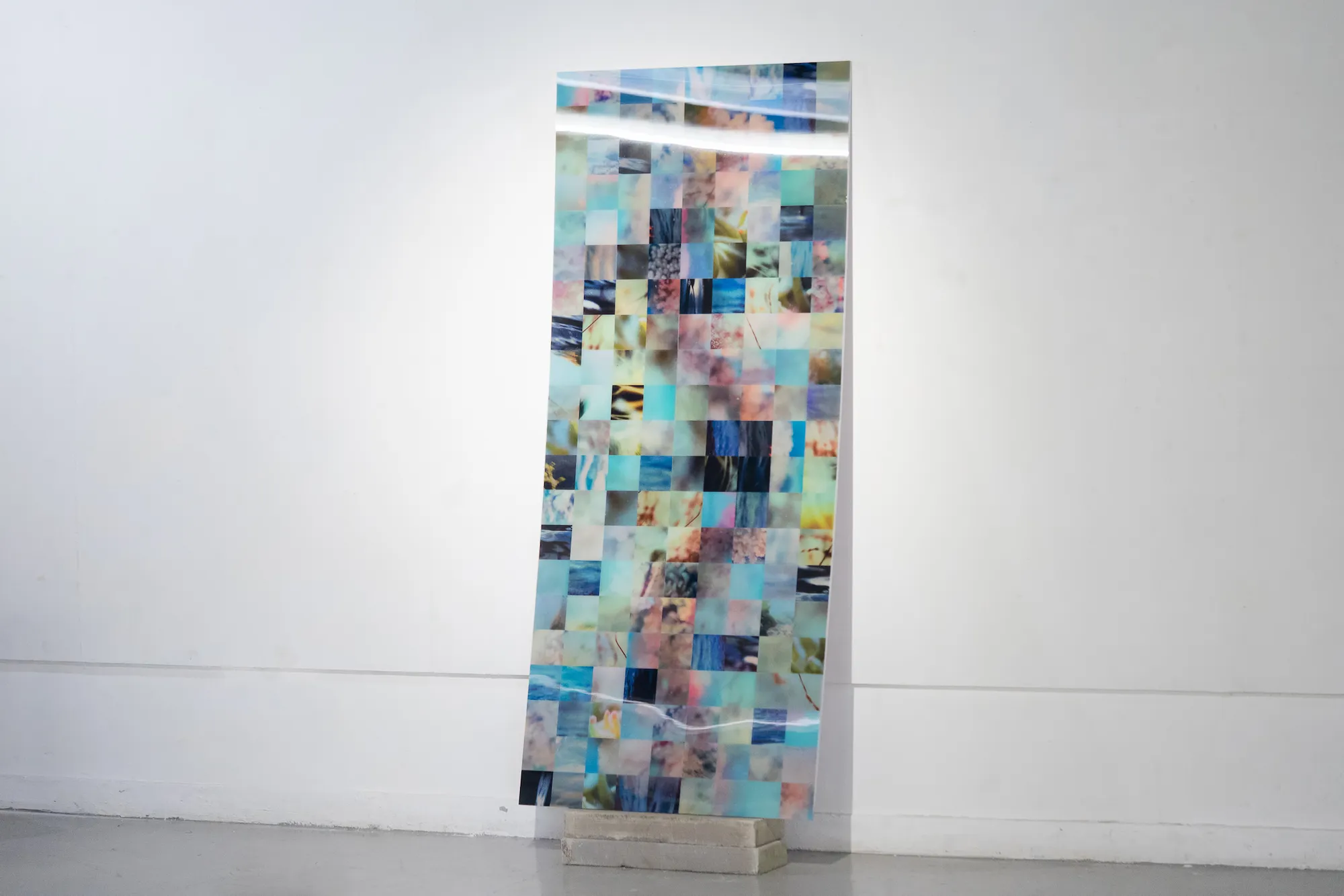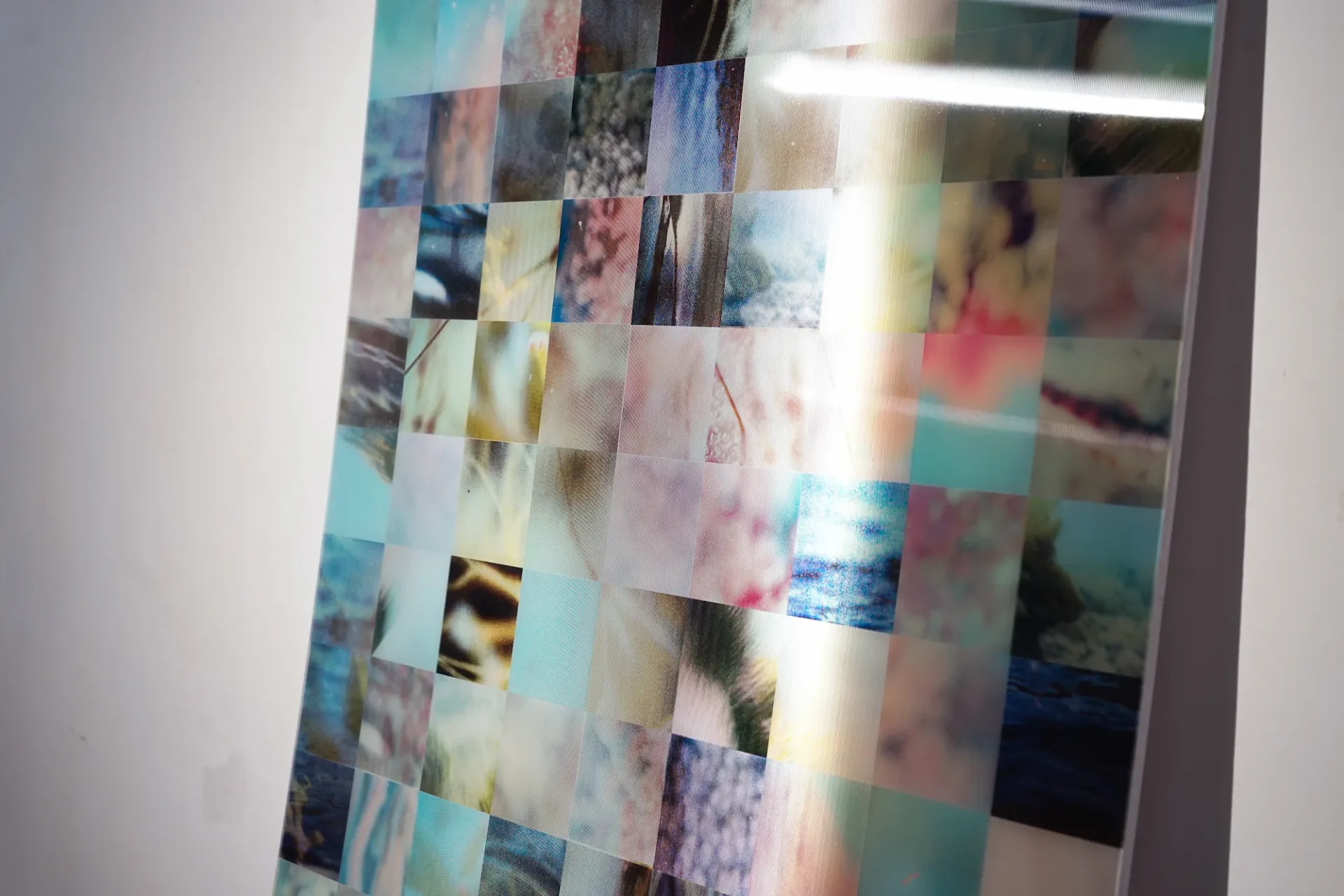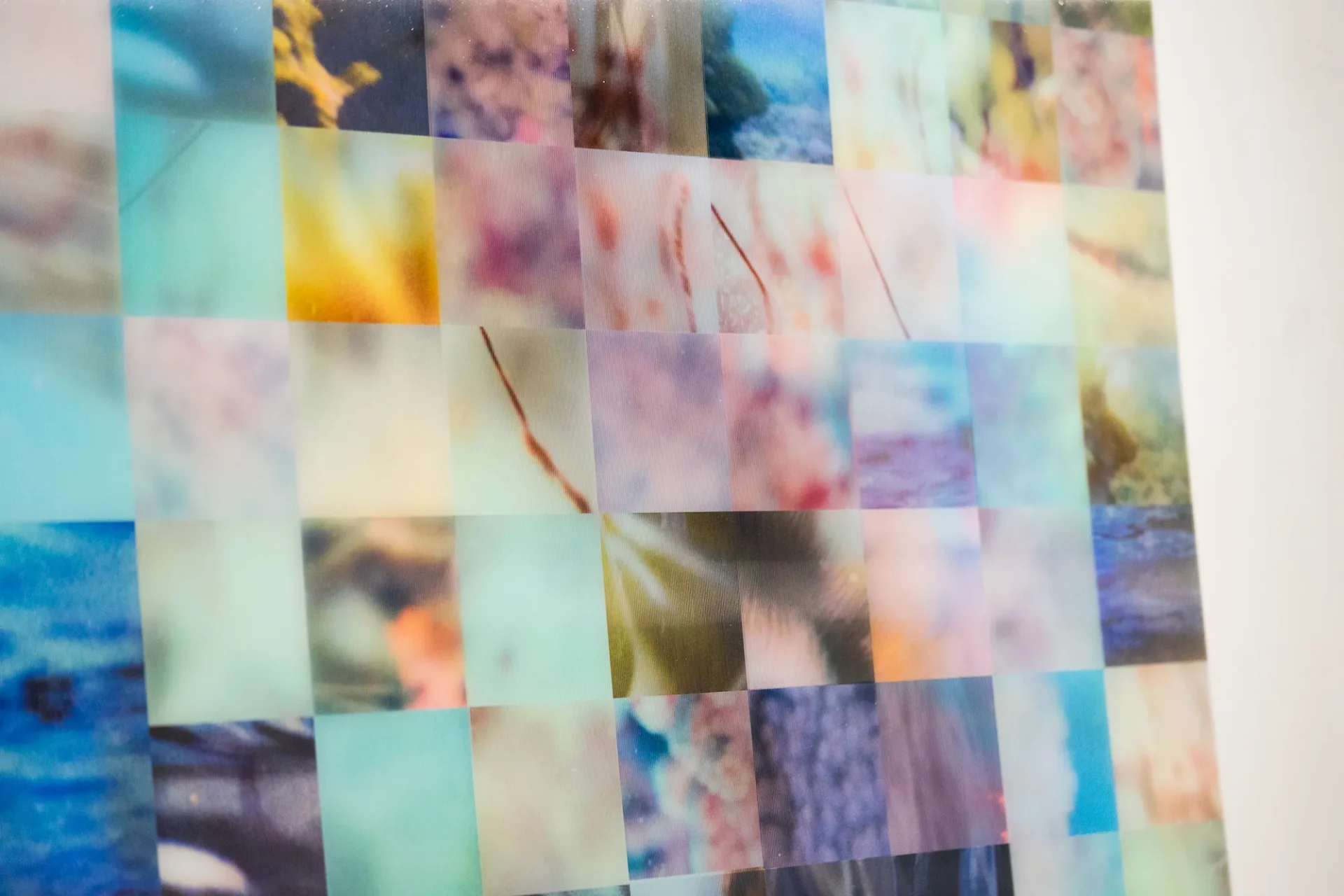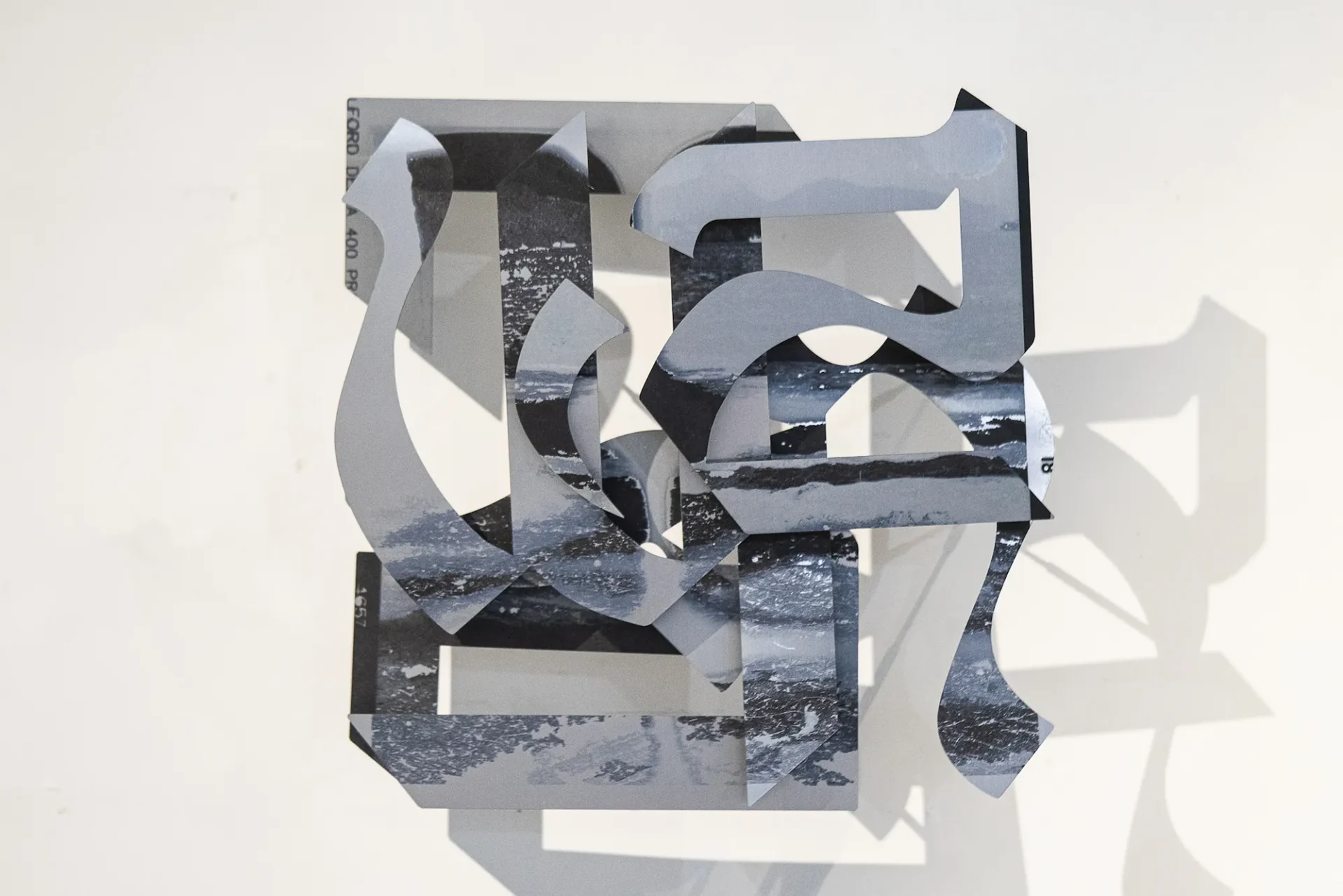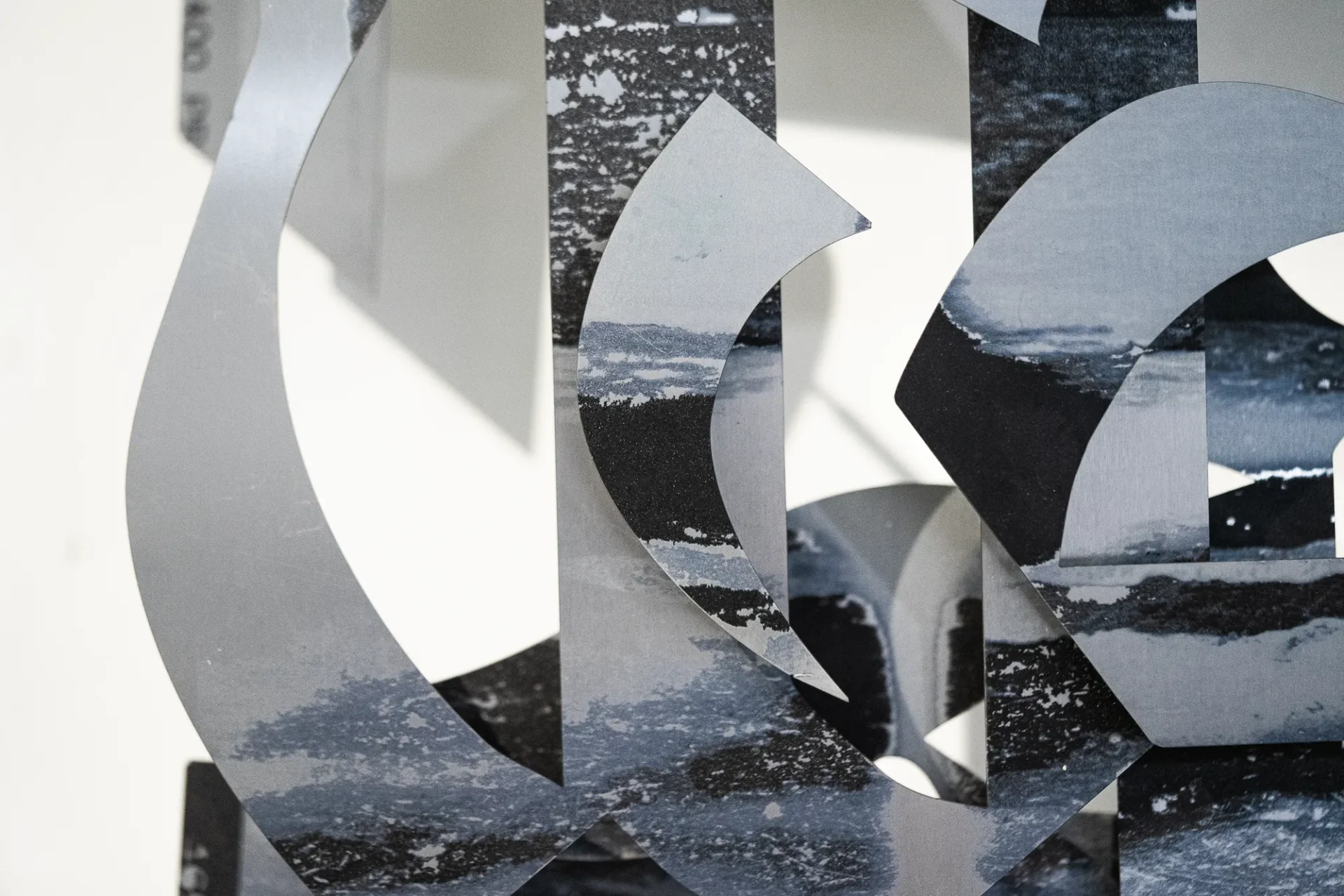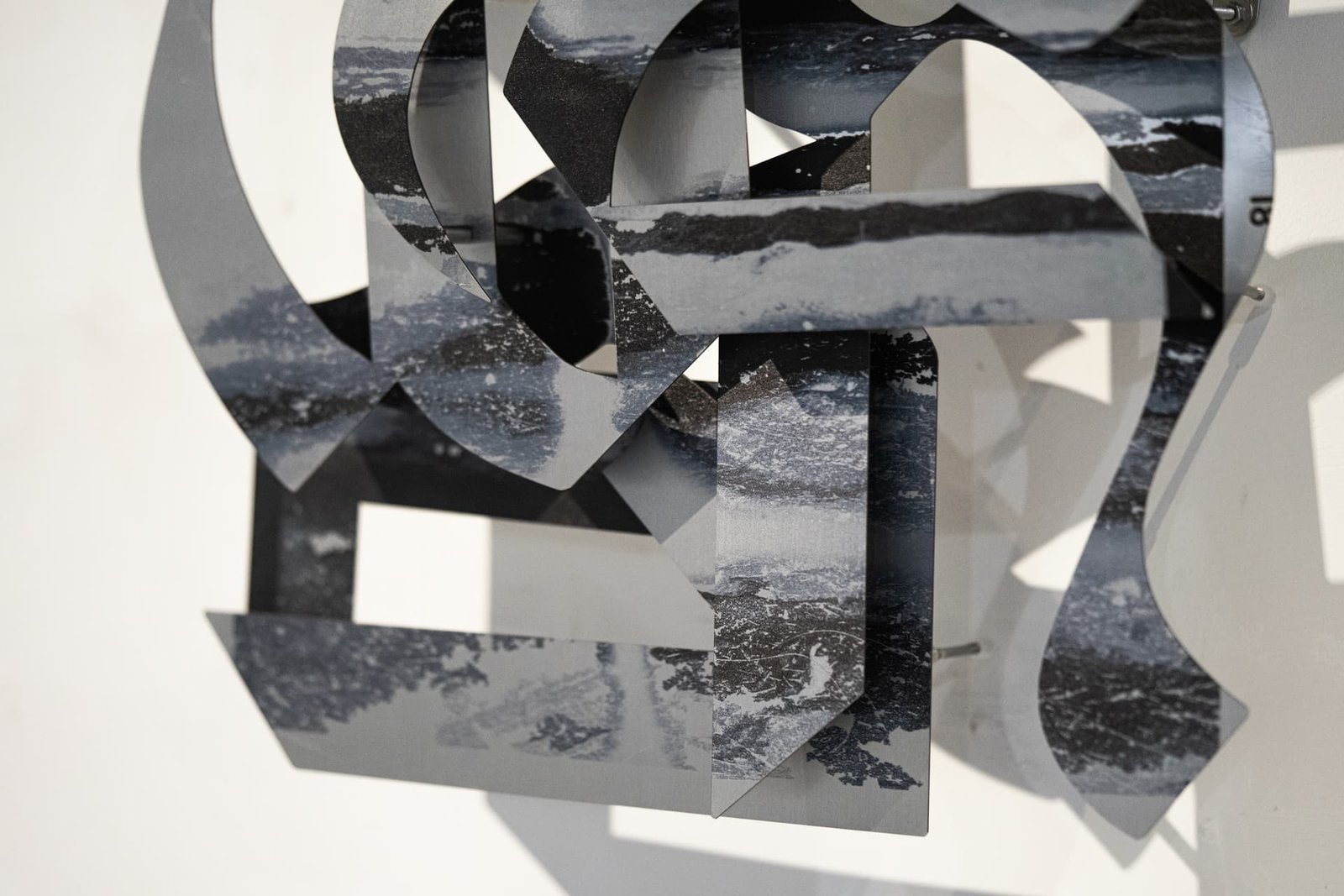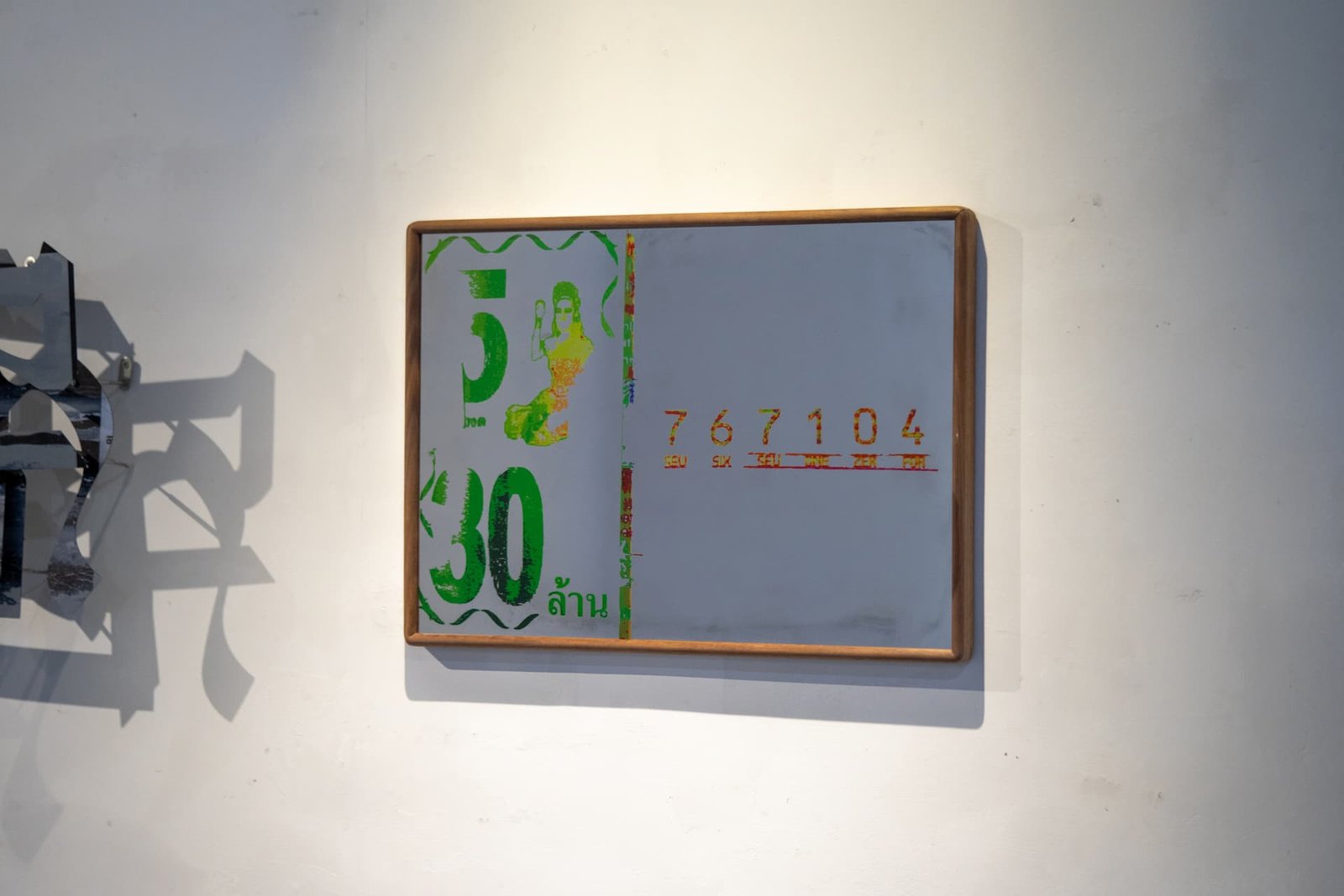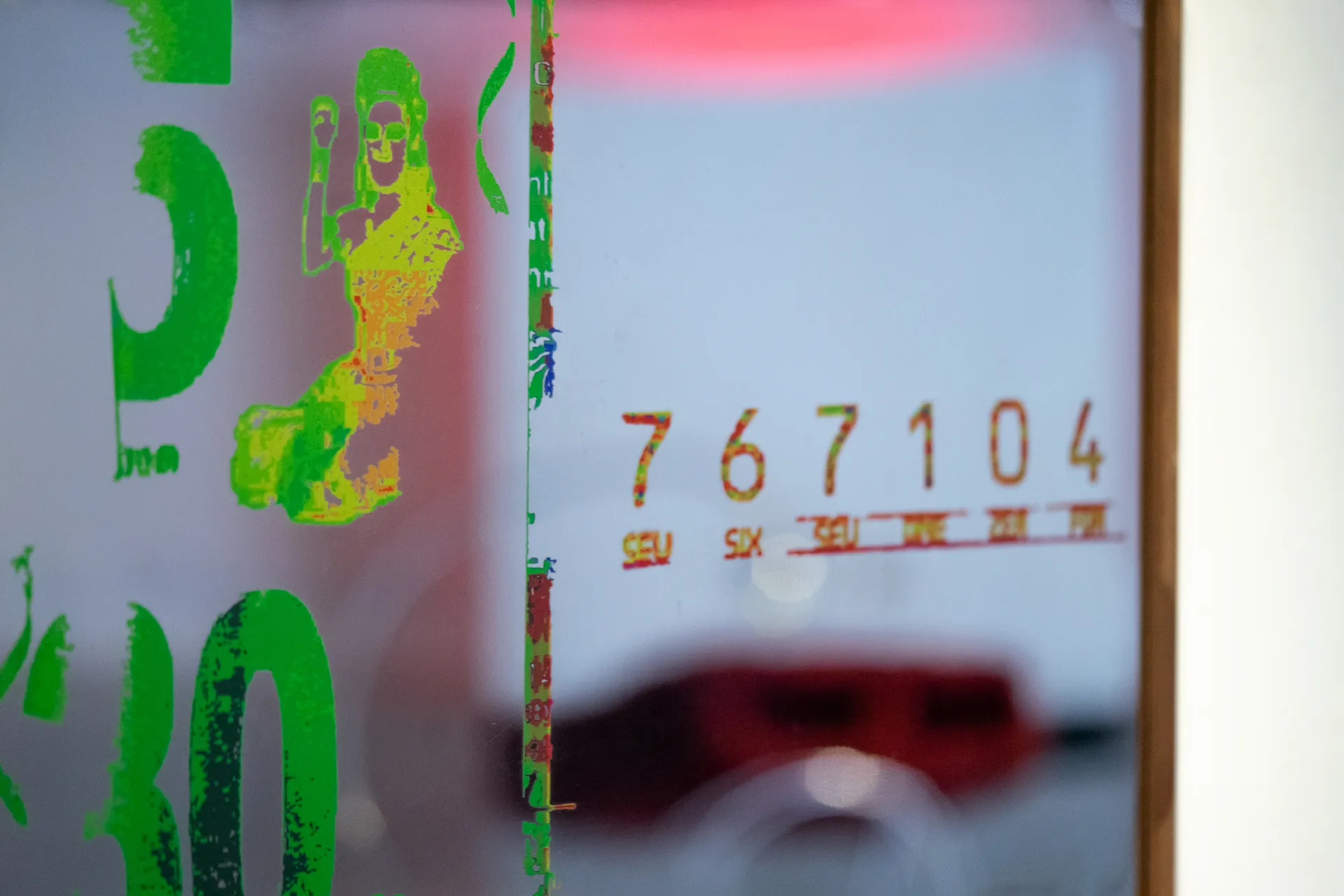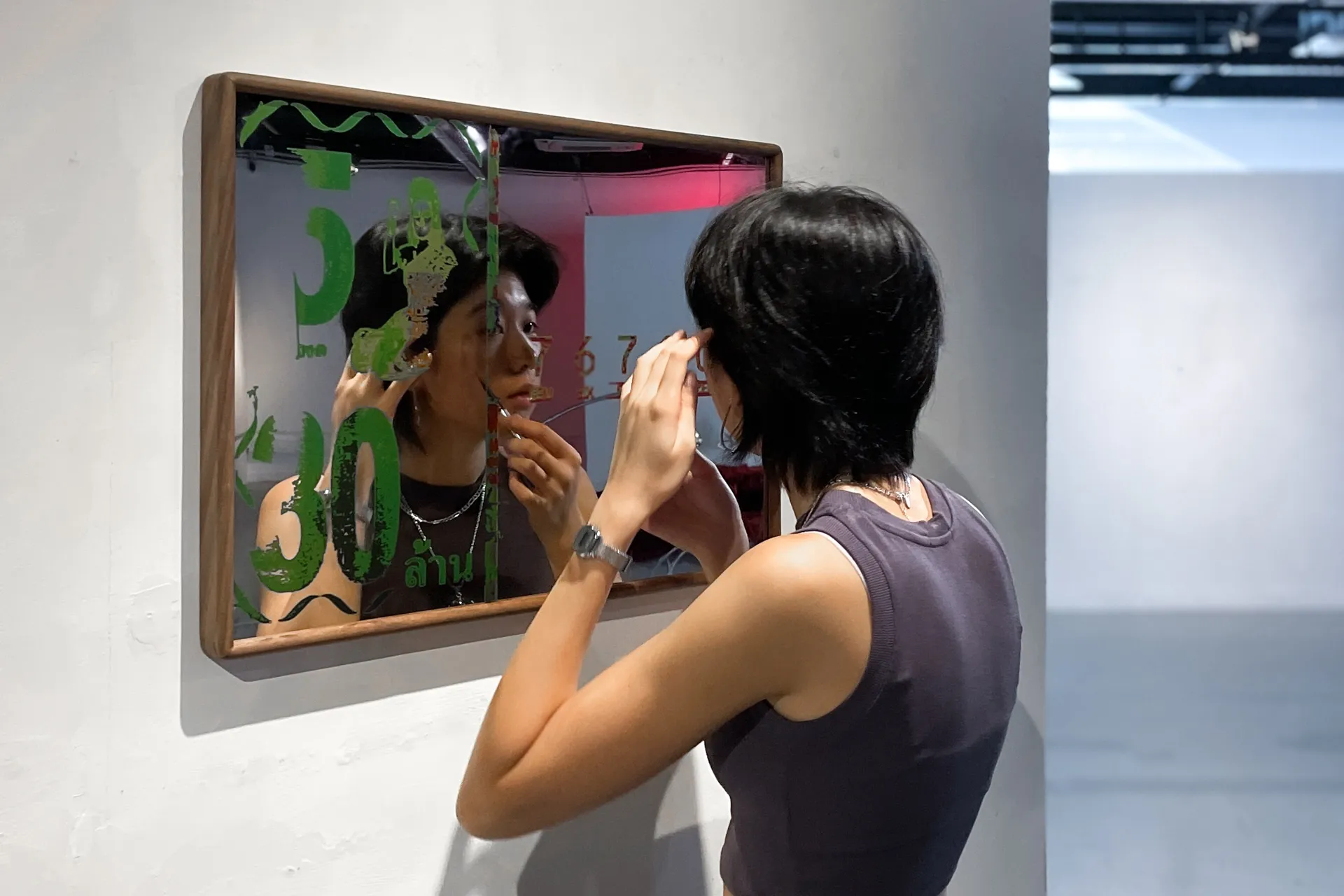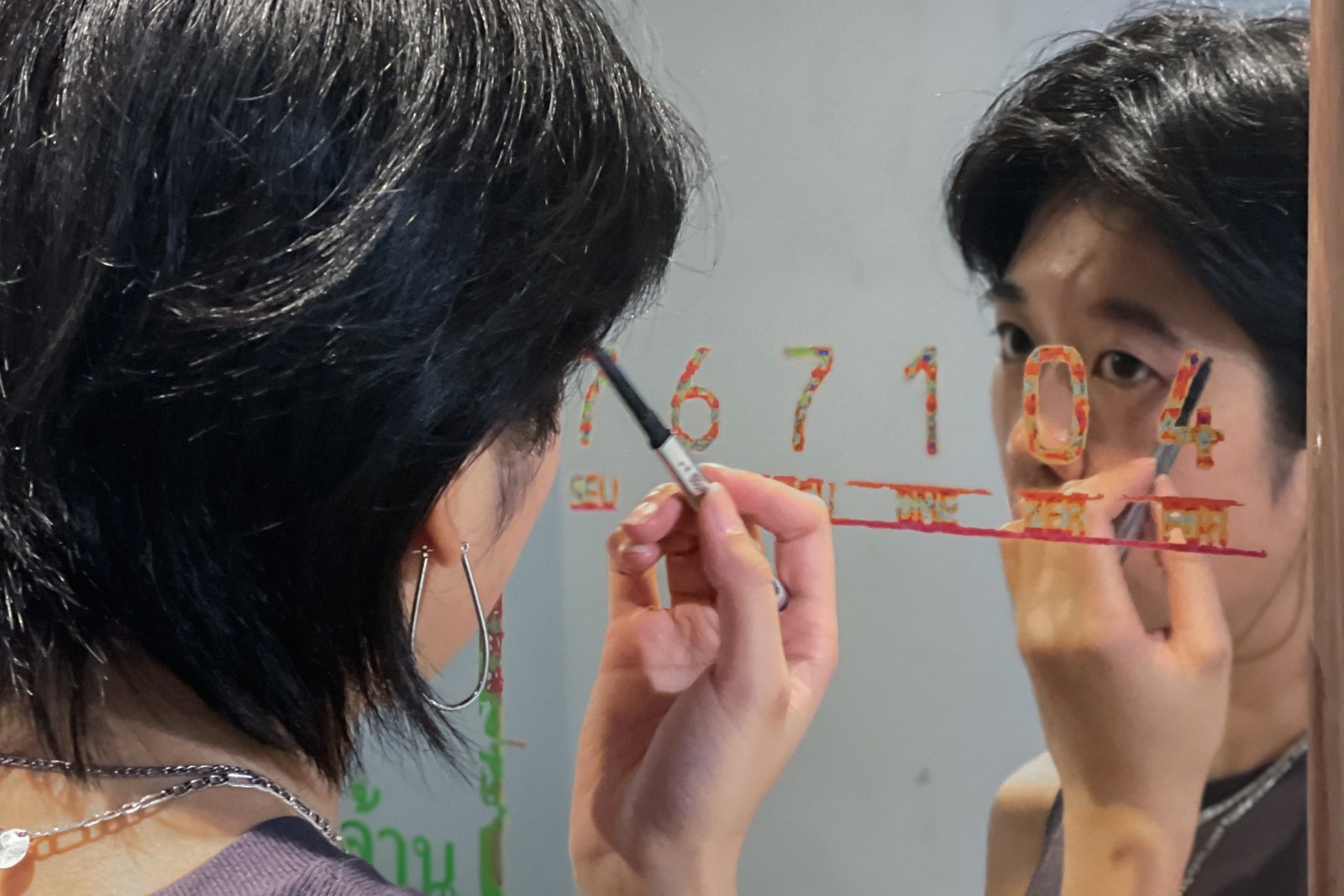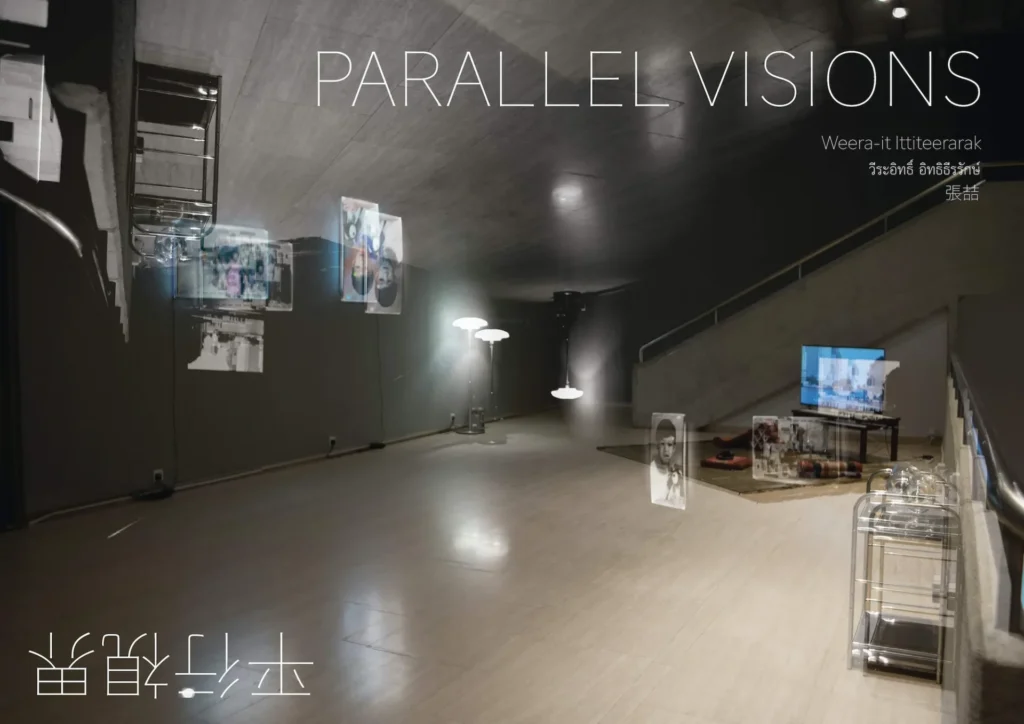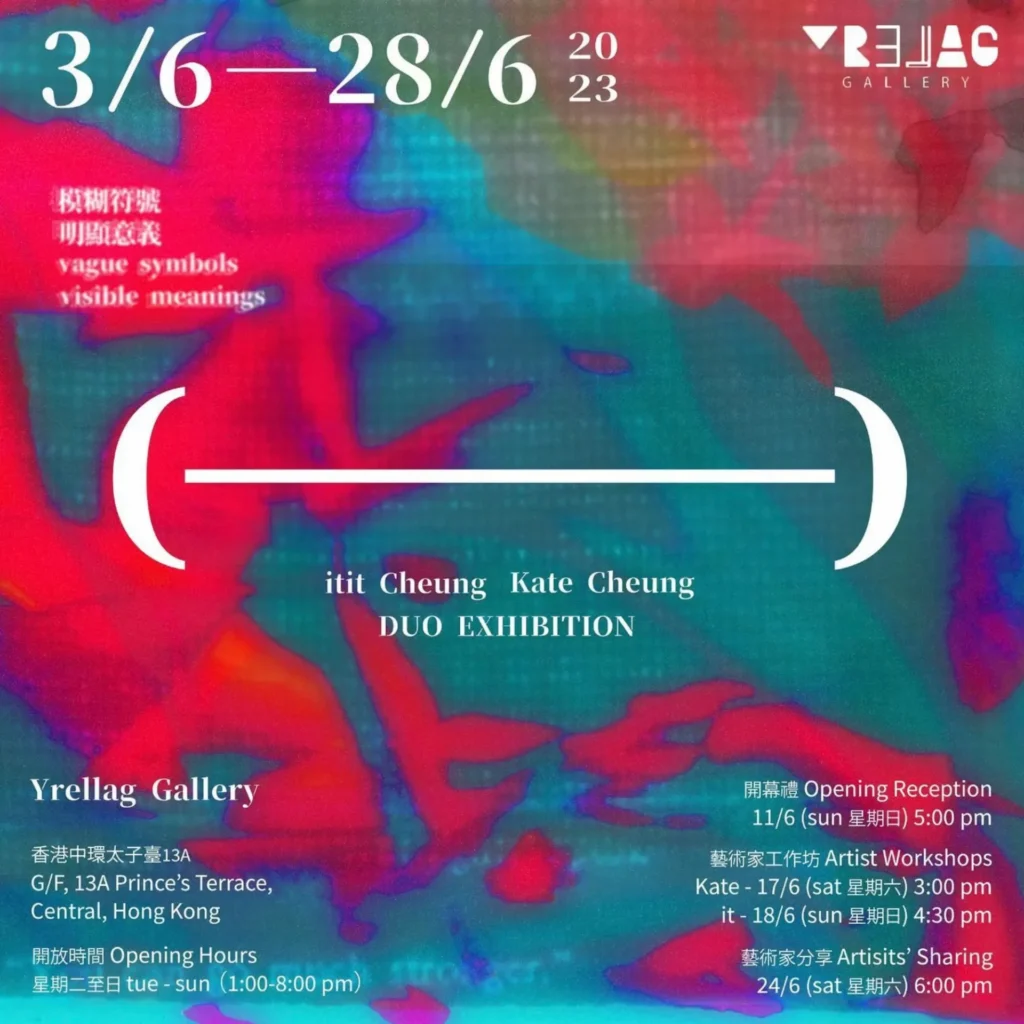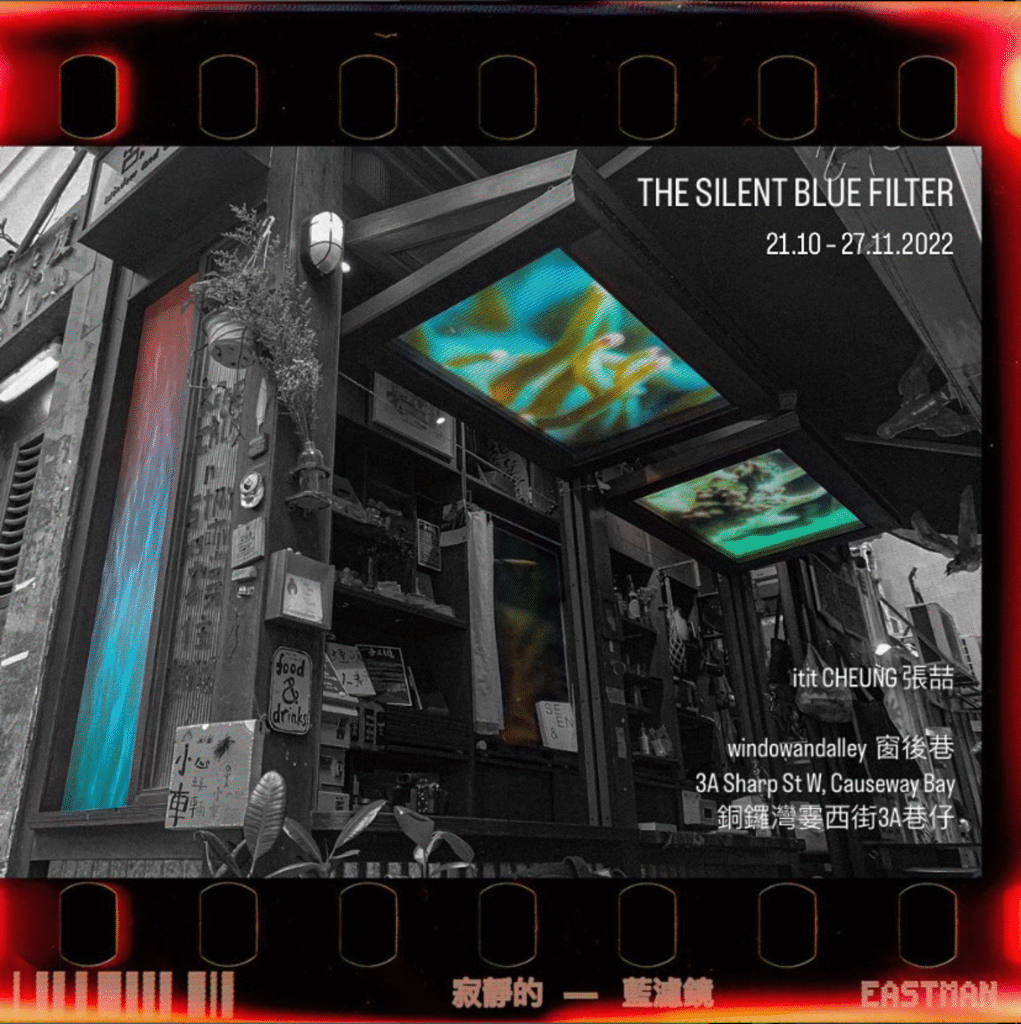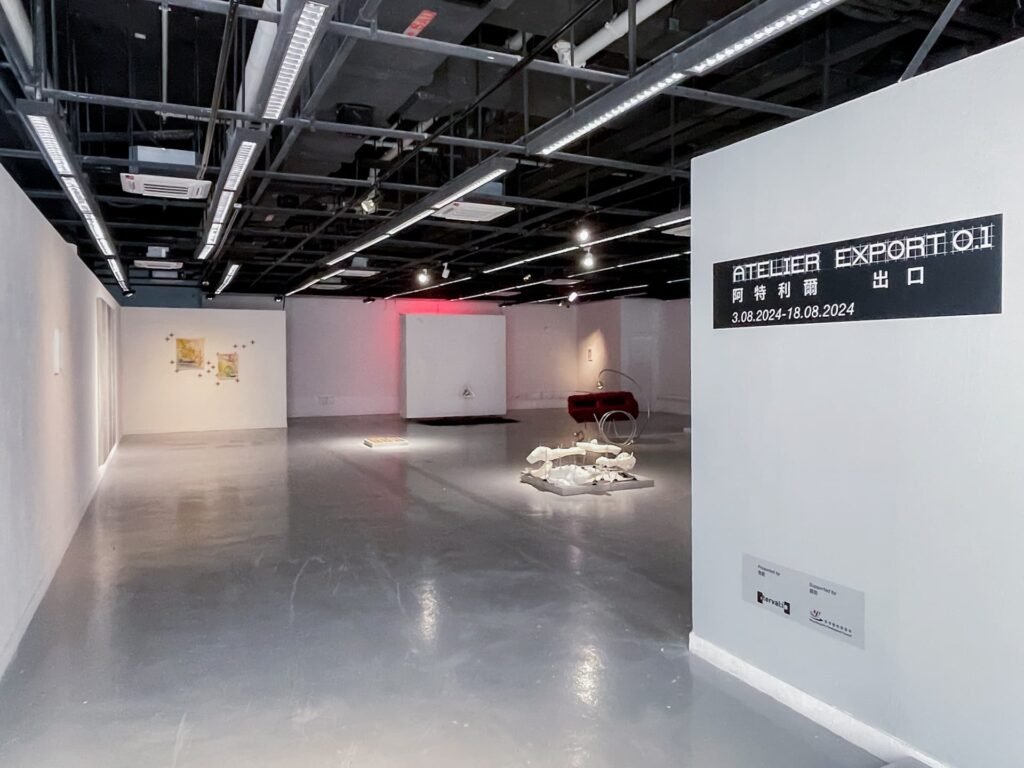
Atelier Export 0.1
“Atelier Export 0.1” is an exhibition which addresses the topic of the studio as a medium. The studio is a complex entity where techniques and technologies converge. However, the ideology of the studio is rarely discussed, being instead preconceived and stereotyped. While this project is to celebrate on a yearly-basis regardless of format, this project has two objectives. Firstly, it aims to support emerging and enthusiastic artists. It does so under the umbrella of a collective studio model that encourages technical artistic production in Hong Kong. Secondly, the project examines the potential influence of a studio space on artistic practice, whether studio space shapes artistic practice. In addition, the intention is to prompt a broader discussion on the contemporary meaning of a studio in Hong Kong, extending beyond illuminating the essence of a studio. It also encompasses broader topics such as artistic labour, the imagination of materials, and the entanglement of current technology in artistic production and fabrication.
Exhibition Period: 3.08.2024 – 18.08.2024
First year, six current studio residents: Chris Chu, Karie Tsui Ka Yee, Lynna Lam Shan, Rain Fung Wing Hung, Sofie Leung, and Weera-it ITTITEERAK are commissioned to present a body of work that reflects on their recent practice and research.
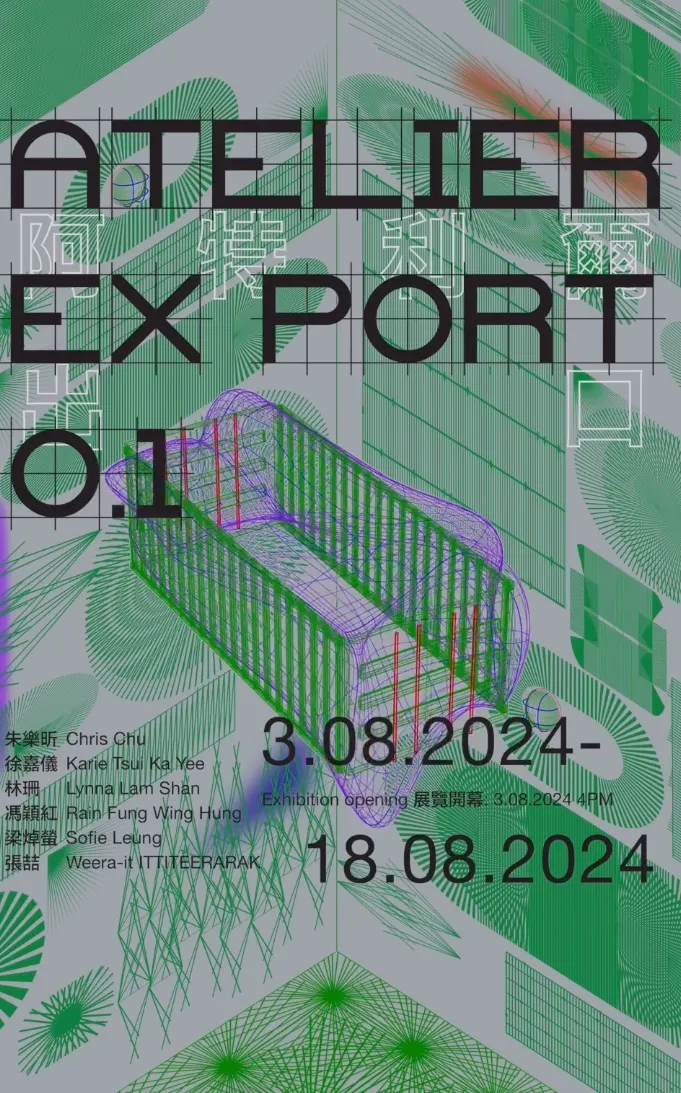
ABSTRACT 撮要
พญานาค (in Thailand, resembling a snake and referred to as a dragon in China; phonetic transcription: Phaya Naga) is considered a legendary creature with spiritual and even divine significance. It is widely spread through Thai folklore, folk beliefs, and Theravada Buddhist scriptures. In the context of non-Euro-American centric exploration and identity research, the term Phaya Naga is used by artists as material to understand cross-cultural complexities. It serves as a fluid carrier, replacing politically defined boundaries, and attempts to explore and establish shared experiences across national borders in the Asia-Pacific region. It examines how people connect with nature, moving away from human-centric thinking, and transforms into various imaginations of identity.
พญานาค(在泰國形象似蛇,中國以龍稱;音譯 納迦、娜迦),被視為具有靈性甚至神性的傳說生物,同時在泰國作為民間信仰、民間傳說、南傳佛教經典而廣傳。在非歐美中心的探索與身份研究的背景下,พญานาค 一詞被藝術家用作創作的材料,用來理解跨文化的複雜性。它作為一個流動的載體,取代了以政治劃分的邊界,嘗試探索並建立亞太地區跨國邊界間的共享經驗,探討人們如何與自然產生聯繫,超越以人類為中心的思考,並轉化成各種身份認同的想像。
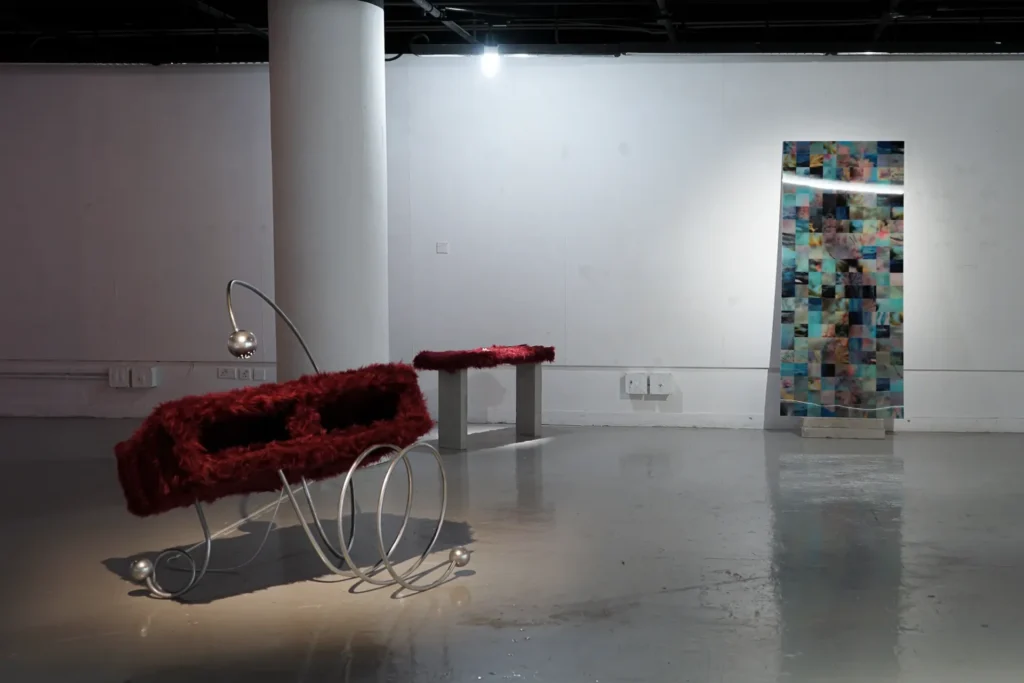
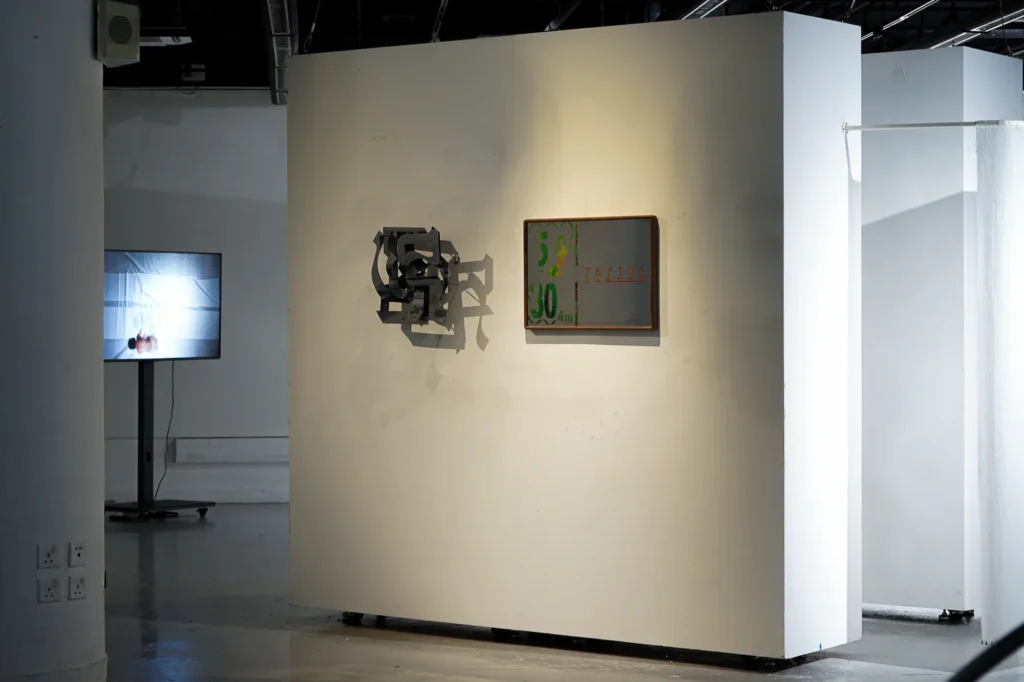
Suspended reverence 懸浮崇敬
Crimson carpet, found table, iron, jasmine samba aroma, stainless steel
深紅地毯、桌子、鐵、茉莉花桑巴香氣、不銹鋼
123.7 x 118.5 x 134 cm
2024
In the dance between permanence and flux, a hidden realm drifts above the chaos, upheld by ancient forces and unseen supports. It embodies the strength and resilience of displaced communities, tethered across diverse lands, navigating the waves of separation. Amidst this ongoing transformation, a profound yearning for ancestral roots persists, reflecting a deep-seated longing for a steadfast embrace. This sanctuary represents the delicate balance between enduring hardship and the search for a grounded connection in a shifting world.
在穩定與變遷中,一個隱秘的境界漂浮在混亂之上,由古老力量和無形支撐所支持。它體現了離散社群的力量和韌性,那些在不同土地上織就的生命線,穿越分離的波浪。在這場持續的變化中,一種對祖先根源的深切渴望依然存在,反映出對穩固擁抱的深情渴望。這個避風港象徵著在艱難困苦與尋求根基之間的微妙平衡,展現了在變動世界中尋求穩固連結的努力。
Suspended Reverence delves into myth and memory through the symbol of Phaya Naga, a legendary creature believed to dwell in hidden realms beneath the water. Drawing on the mystery of Kham Chanod Forest—a place in Thai folklore where a portal to another world is thought to exist—the artwork evokes a liminal space suspended between permanence and change. The crimson carpet and industrial elements like iron and stainless steel establish a site of reverence, embodying resilience amid constant transformation and displacement.
Informed by the artist’s own experiences as a scuba diver, Suspended Reverence echoes the exploration of unseen worlds beneath the sea, where the artist searches for traces of non-human life and memories hidden below the surface. Each exhibition of the artwork adapts to its environment, with the found table—a central element—replaced by objects sourced locally, allowing the piece to transform in form and scale. This adaptability mirrors the fluid nature of cultural identity, which shifts and evolves as it encounters new spaces.
With Phaya Naga as a recurring symbol throughout their work, the artist invites viewers to join a journey of discovery, a continuous search for connection to heritage, and a reverence for the mysteries that lie beyond what we see. Suspended Reverence becomes both an artwork and an entity, alive in its capacity to adapt, reflecting a timeless yearning for roots even as it embraces the transient.
透過「Phaya Naga」的象徵,作品深入探討神話與記憶的交織。「Phaya Naga」是傳說中棲息於水下隱秘世界的靈性生物,而作品靈感源自泰國民間傳說中的 Kham Chanod 森林——據說那裡存在通往另一個世界的入口。這件作品營造出一個懸浮於永恆與變遷之間的過渡空間,以深紅地毯及鐵、不鏽鋼等工業元素構築出一處敬仰之境,象徵著在不斷的變動與流離之中所孕育的堅韌。
受到藝術家潛水經驗的啟發,《懸浮崇敬》亦呼應了對水下隱秘世界的探索——藝術家在其中尋覓非人類生命的痕跡與被隱藏的記憶。作品於不同展覽場域會隨地而變,核心元素「桌子」會以當地尋得的物件取代,使作品在形式與尺度上持續變化。這種可變性映照出文化身份的流動性——隨著與新環境的遭遇而不斷轉化、生成。
「Phaya Naga」作為藝術家創作中的反覆意象,邀請觀者一同展開探索的旅程——那是一場對於傳承的追尋,以及對不可見之謎的敬仰。《懸浮崇敬》既是一件作品,也是能夠自我轉化的有機體,在持續變動中反映出人類對根源的永恆渴望,以及在無常中擁抱的深情。
การแตกตา (budding) 分芽
wild Chinese Ixora’s androecium with resin
野生龍船花雄蕊, 樹脂
2023/2024
การแตกตา (budding) explores the relationship between parent and child through a metaphor inspired by asexual reproduction in plants. In this process, the parent produces an offspring that remains attached until it can live independently, reflecting the bond between parent and child. Using wild Chinese Ixora’s androecium preserved in resin, the work symbolizes the passing of knowledge and experience from father to child. This delicate balance of attachment and separation echoes the universal struggle of children growing up—carrying the legacy of their parents while seeking their own identity. The artwork also reflects a personal narrative of loss and the yearning for cultural roots, drawing on the artist’s experience of losing a father at a young age.
探索了親子關係,並以植物的無性繁殖隱喻加以呈現。在這個過程中,母株孕育出新的個體,並持續相連,直到其具備獨立生存的能力,映照出父母與子女之間的聯繫。作品中使用了以樹脂封存的野生龍船花(Chinese Ixora)的雄蕊,象徵知識與經驗自父親向子女的傳承。這種纏繞於依附與分離之間的微妙平衡,正如子女成長過程中的普遍掙扎——一方面承載著父母的遺澤,另一方面又渴望尋找自我的身份。此作品同時折射出一段個人的失落記憶與對文化根源的渴望,源自藝術家年幼時失去父親的生命經歷。
Budding explores memory, ritual, and inheritance through the intimate act of tasting nectar from the wild Chinese Ixora, a flower rooted in the artist’s childhood in Thailand. Once shared with his father, this fleeting sweetness became a ritual of connection—fragile, elusive, and bound to time. Years later in Hong Kong, the artist preserved this memory by embedding androecia from the Ixora into resin, each casting performed like a solemn gesture of remembrance. Eleven stamens were sealed each day, culminating in fifteen bone-like forms when the flowers were exhausted, their number echoing both coincidence and inevitability.
The work reflects on the delicate process of transmission—between generations, between absence and presence, between what is carried forward and what slips away. Like plant budding or grafting, where life continues through fragile attachments, the piece mirrors the artist’s own inheritance from his late father, who passed away when the artist was eleven.
Suspended between personal loss and cultural continuity, Budding becomes both relic and offering: a meditation on how memory crystallizes into material form, how rituals transform grief into resilience, and how identity takes root through cycles of attachment, separation, and renewal.
《分芽》透過記憶、儀式與承傳的交織,展現了藝術家對父子關係的思考。童年時在泰國,藝術家曾與父親一同採摘並品嚐野生龍船花的花蜜,那短暫而難以捕捉的甜味,成為彼此連結的微妙儀式。多年後於香港,他將這份記憶化為物質,將龍船花的雄蕊逐一封存於樹脂之中。每天十一枝,像是莊嚴的祭儀,最終製成十五件骨狀的形體,恰巧在雄蕊耗盡之時完成,數字間帶著巧合與必然。
作品映照了承傳的微妙過程——世代之間、在缺席與存在之間、在延續與消逝之間的流轉。正如植物的分芽與嫁接,生命透過脆弱的依附而延續,作品也映射了藝術家自身的傳承:父親在他十一歲時離世,卻以另一種方式留下了痕跡。
在個人失落與文化延續之間,《分芽》既是遺跡,也是獻禮。它沉思記憶如何凝結為物質,哀悼如何轉化為韌性,而身份又如何在依附與分離的循環中扎根、重生。
Drift along the current 隨流漂泊
18LPI lenticular board on inkjet print;
18LPI 光柵板噴墨印刷
210 x 90 x 13 cm
2019/2024
Amidst the ever-shifting tides of diaspora, the artist’s mind remains anchored, navigating currents of displacement with a steadfast resolve. As they weave together past and present, a poignant longing for ancestral roots and a deep yearning to preserve traditions and memories emerge. Their quest for elusive traces of Phaya Naga in the sea becomes a symbolic journey, reflecting a profound connection to heritage. This pursuit offers solace and strength, guiding their exploration of new landscapes while seeking the comforting embrace of the familiar.
在流動的離散潮流中,藝術家的心境如同穩固的錨點,穩定地穿越流亡的波濤。當他們將過去與現在交織在一起時,深切的對祖先根源的渴望和對保存傳統與記憶的渴望浮現。尋找海中Phaya Naga的痕跡成為一段象徵性的旅程,反映出與文化遺產的深刻聯繫。這份追尋提供了安慰與力量,引領他們在新的景觀中探索,並尋找那熟悉的慰藉。
Drift along the current traces the currents of diaspora and the search for cultural roots through shifting images embedded in an 18LPI lenticular print. Taller than the viewer, the work confronts the body with a surface that never settles: blurred photographs dissolve into faint curved shadows, only revealed through movement. This instability mirrors the experience of migration, where memory and belonging remain in flux, visible yet elusive.
Anchored in the artist’s ongoing search for traces of Phaya Naga within the sea, the piece transforms the act of looking into a journey—audiences must drift before it, allowing embodiment to shape perception. In this way, the work echoes the disorientation and resilience of navigating displacement, where identity and memory blur like images caught in water. Re-presented in each exhibition, Drift along the current adapts to its environment, its meaning shifting with context, much like the ever-changing tides of diaspora.
Through this interplay of movement, instability, and longing, the work opens a liminal space between past and present, memory and forgetting. It becomes both image and experience, an invitation to drift with the currents of heritage, uncertainty, and the enduring search for home.
《隨流漂泊》透過18LPI光柵板噴墨印刷,追溯離散中的潮流與尋根的渴望。高於觀者身軀的作品,將身體直接置於一個不斷變動的表面之前:模糊的影像在移動中化為若隱若現的曲線黑影,只有透過觀者的步伐與視角,畫面才逐漸顯現。這種不穩定性正映照出遷徙經驗——記憶與歸屬始終處於流動之中,可見卻又難以觸及。
作品扎根於藝術家對於海中「พญานาค (Phaya Naga)」痕跡的持續追尋,將觀看的過程轉化為一段旅程——觀者必須在作品前漂移移動,讓身體的參與成為感知的媒介。這樣的觀看方式呼應了流離失所的迷惘與堅韌:身份與記憶如同水中影像般模糊閃現。作品在每一次展出中亦重新被詮釋,其形式與語境因環境而異,正如離散潮汐般不斷更迭。
透過移動、失穩與渴望的交織,《隨流漂泊》開啟了一個介乎過去與現在、記憶與遺忘之間的中介空間。它既是影像,也是體驗,一份邀請,讓人隨流而行,漂泊於文化根源、不確定性與對家園持續不斷的追尋之中。
Empty Shore Echoes 空灘迴響
Analog negative photograph printed on stainless steel ;負片照片印於不銹鋼
40 x 40 x 14.5 cm
2024
In the silent spaces left by isolation, a symbol rises from the steel, echoing a realm caught between absence and presence. Amidst the stark contrasts of a world once vibrant now subdued, there is a whisper of myth and memory. The remnants of an empty shore speak of a deeper longing, weaving together fragments of displacement and the quest for solace. Carved from a landscape of disconnection, it embodies the unspoken ache for home and stands as a silent testament to the enduring search for meaning amidst change.
在隔離留下的靜默空間中,一個符號從鋼鐵中升起,回響著一個處於缺席與存在之間的境界。在這個曾經充滿活力如今被抑制的世界的鮮明對比中,隱約傳來神話與記憶的低語。空曠海灘的痕跡講述著更深層的渴望,編織出流離與尋求慰藉的片段。從斷裂的景觀中雕刻而成,體現了對家園的無聲渴望,成為在變遷中持續尋求意義的靜默見證。
Created during the lockdown in Hong Kong, Empty Shore Echoes captures an untouched beach where no human footprints remain. In this silence, the artist recalls a childhood memory from Thailand—tales of Phaya Naga rising from the water and leaving traces on land. The absence of marks on the sand becomes a haunting metaphor, evoking both isolation and myth.
The photograph was deconstructed and reassembled into the Thai word “พญานาค” (Phaya Naga), layered to form new compositions. Printed as a negative image on stainless steel, the work embodies both the permanence of steel and the fragility of memory, holding the tension between presence and absence. The reflective surface becomes a site where the viewer encounters their own shadow within the work, as if echoing the traces that were never left behind.
Empty Shore Echoes inhabits a liminal realm—between myth and memory, absence and presence. The empty shore becomes a symbolic resonance, connecting personal displacement with cultural narratives. Here, Phaya Naga functions as a fluid carrier across borders, embodying shared experiences in the Asia-Pacific region. The work reflects not only the longing for home and belonging, but also a reverence for the unseen connections that persist amid change.
《空灘迴響》源於藝術家在疫情封鎖期間於香港沙灘的拍攝。當時無人足跡留下,沙灘的空白引發了童年的記憶——在泰國的傳說裡,พญานาค(Phaya Naga)會從水域登陸,並在大地上留下痕跡。這些未被打擾的景象,於孤立中喚起了對「痕跡」與「缺席」的想像。
藝術家將拍攝的照片進行拆解,重構為「พญานาค」的泰文字形,並以重疊與編排方式重新呈現。透過負片影像與不銹鋼的堅硬質地,作品既保留了時間的印記,又映照出一種冷冽與距離感,像是被封存的記憶在鋼鐵表面回響。
《空灘迴響》徘徊於缺席與存在之間——空曠的海灘化為一種符號性的回聲,回應著人類孤立經驗與文化神話的交織。作品不僅凝視個人的流離與失落,更將พญานาค視為跨文化的流動載體,承載著亞太地區共享的想像與連結。在這裡,神話的痕跡與現實的缺口重疊,成為對家園與歸屬無聲卻持續的呼喚。
Mirror, mirror, what is my colour and number of the day 鏡子,鏡子,今天我的顏色和數字是什麼?
Digital printed on mirror stainless steel
數碼打印在鏡面不銹鋼上
62.2 x 44.8 x 3.5 cm (with nut-brown frame)
2023
In the early morning of Songkran, the artist purchased their own first lottery ticket in front of a Buddhist temple. Amidst the dense array of lottery tickets, they searched for the combination of numbers that would bring them luck. They then entered the temple to pay their respects. Upon leaving the temple, they discovered that the lottery ticket had vanished from their pocket. As they retraced their steps, there was no sign of it. All that remained was the impression of luck in the artist’s memory.
在宋干節的清晨,這位藝術家在一座佛教寺廟前購買了自己人生中的第一張彩票。在密集排列的許多彩票中,他們尋找著能為自己帶來幸運的數字組合。隨後,他們進入寺廟參拜,離開時卻發現彩票已經從口袋裡消失了。他沿著來時的路線仔細尋找,但彩票仍然不見蹤影。最終,只留下了在藝術家記憶中那份關於幸運的印象。
Mirror, mirror, what is my colour and number of the day not only reflects on the ephemerality of luck and the impermanence of fate, but also on the shifting role of belief in contemporary life. The act of purchasing and losing a lottery ticket sits between the logic of modern probability and the rituals of folk tradition, echoing both the everyday desire for fortune and the ancestral practices of divination, symbols, and offerings. The mirrored surface places the viewer’s own reflection alongside numbers and colours, suggesting how belief takes root again in the rhythms of modernity and the ordinary. Like the tides, faith flows through cycles of disappearance and renewal, shaping our imagination of destiny and the future.
《鏡子,鏡子,今天我的顏色和數字是什麼》不僅探討幸運的短暫與命運的無常,更折射出信仰在當代社會中的流變。購買與遺失彩票的經歷,介乎於現代的機率遊戲與古老的祈福儀式之間,既是日常中對幸運的渴求,也呼應著傳統民間信仰裡透過占卜、符號與供奉去尋找庇佑的做法。作品的鏡面把觀者的身影與數字、色彩並置,暗示信仰如何在現代化與日常化的生活節奏中重新生根。正如潮水不斷起落,信仰亦在消逝與再生之間流轉,塑造著我們對未來與命運的想像。

